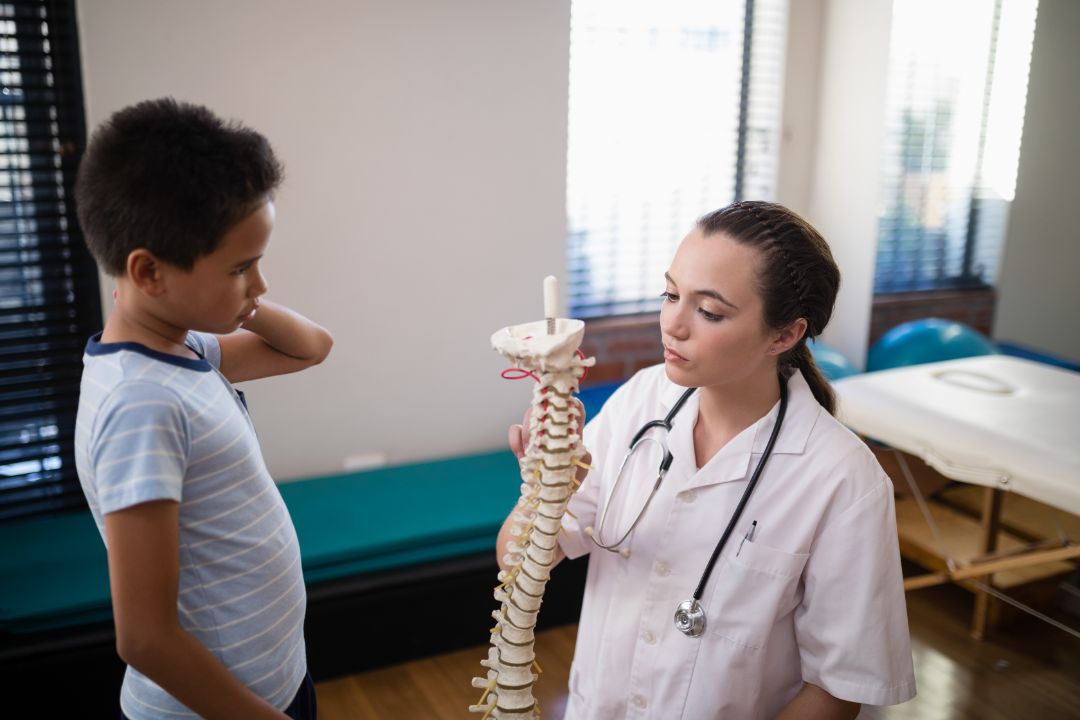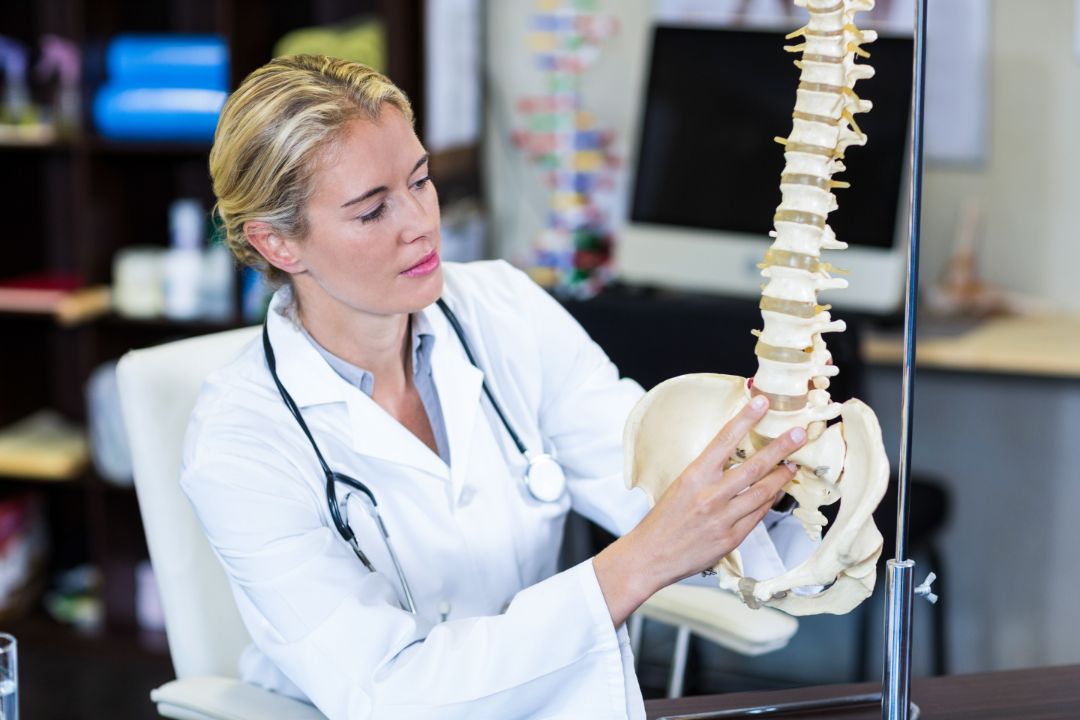Youth spinal pain can be a debilitating condition that affects a growing number of young individuals. It is important to understand its symptoms, causes, and treatment options to empower those dealing with this condition to seek the appropriate care.
Youth spinal pain, also known as adolescent idiopathic scoliosis, is a common condition that affects young people. It is characterized by a curvature of the spine that can cause discomfort, pain, and limited mobility. Spinal pain can have a significant impact on overall health and quality of life, especially during the formative teenage years.
According to research, spinal pain affects up to 40 percent of young people, making it a prevalent condition that requires early identification and treatment. Early intervention is critical to prevent the worsening of the condition and avoid more severe health issues. That is why understanding youth’s spinal pain is essential for parents, educators, and young people.

Photo Credit: Wavebreakmedia, Envato
Spinal pain can lead to a range of symptoms that can affect daily life. These symptoms may include backache, stiffness, limited range of motion, and, in some cases, radiating pain. The pain and discomfort can make it challenging to carry out daily activities and may even lead to decreased physical activity.
It’s important to detect spinal pain early and seek medical attention promptly to determine the cause of the pain and to establish the best course of treatment. Young people should be encouraged to speak to a healthcare professional or their parent or guardian if they experience any symptoms of spinal pain.
Youth spinal pain can present in various ways, and the symptoms can differ depending on the underlying cause. The most common indicators of spinal pain among young people include:
Other symptoms accompanying youth spinal pain include muscle spasms, numbness or tingling in the limbs, and weakness. It is important to seek medical attention if you experience any of these symptoms to determine the underlying cause and receive appropriate treatment.
Youth spinal pain can stem from a range of factors, including poor posture, sedentary lifestyles, sports injuries, spinal deformities, and genetic predispositions.
Poor posture is a leading cause of spinal pain in young people. It is often the result of prolonged sitting, slouching, carrying heavy backpacks, or incorrect ergonomic set up at work or school. Over time, poor posture can strain the muscles, joints, and ligaments, leading to chronic pain and discomfort.
Modern lifestyles are increasingly sedentary, with young people spending more time on screens, gaming, and social media. Lack of physical activity strains the spine, leading to weak muscles, limited mobility, and poor flexibility. Over time, this can lead to chronic spinal pain and discomfort.
Sports injuries are a common cause of spinal pain in young people. High-impact and contact sports like football, soccer, and basketball can result in spinal injuries such as fractures, dislocations, and herniated discs. Repetitive motions, overuse, and poor technique can also lead to spinal pain and discomfort in athletes.

Photo Credit: Wavebreakmedia, Envato
Spinal deformities like scoliosis, kyphosis, and lordosis can also cause spinal pain in young people. These conditions may be present at birth or develop over time and can cause significant pain and discomfort in the back, neck, and shoulders.
Some young people may be more susceptible to spinal pain due to genetic factors. Structural abnormalities or weaknesses in the spine may run in families and increase the risk of spinal pain and discomfort.
Identifying the underlying cause of spinal pain is crucial for effective treatment and management. If you or your child experiences spinal pain, it’s essential to seek professional medical advice to determine the underlying cause and develop an appropriate treatment plan.
Diagnosing youth spinal pain involves a comprehensive evaluation to identify the underlying cause and severity of the condition. Your healthcare provider will conduct a medical history assessment and physical examination to evaluate your symptoms and range of motion. They may also order imaging tests such as X-rays, MRIs, or CT scans to get a better look at the spine’s structures and identify any abnormalities or injuries.

Photo Credit: YuriArcursPeopleimages, Envato
If your healthcare provider suspects an underlying condition, they may refer you to a specialist, such as a chiropractor, physiotherapist, or orthopedic surgeon. Specialists can perform more detailed evaluations and develop customized treatment plans based on your specific needs.
If your healthcare provider suspects scoliosis as the cause of your spinal pain, they may perform additional tests to confirm the diagnosis. These tests may include:
Early detection and intervention are critical for managing scoliosis, as it can progress and lead to more severe symptoms and complications if left untreated. With a proper diagnosis, your healthcare provider can develop an individualised treatment plan to help manage your symptoms and prevent further progression.
There are various treatment approaches for youth spinal pain, depending on the severity of the condition and underlying cause. The goal of treatment is to alleviate pain, improve spinal function, and prevent recurrence.
Conservative approaches are usually recommended as the first line of treatment for youth spinal pain. These methods focus on lifestyle modifications, physiotherapy, and exercise programs to improve spinal alignment and range of motion.
If conservative methods fail to alleviate symptoms, medical interventions may be necessary. These interventions can include:
It is important to note that medical interventions may come with potential risks and side effects. Therefore, discussing each option’s benefits and risks with a healthcare professional is essential.
Preventing youth spinal pain is crucial for promoting lifelong spinal health. Making simple yet effective lifestyle modifications can significantly reduce the risk of spinal problems and improve quality of life. Here are some practical tips for young people:
Good posture is essential for spinal health. Avoid slouching or hunching over while sitting or standing. Instead, sit up straight with your shoulders back and your feet flat on the ground. Use ergonomic chairs and desks that support proper posture.

Photo Credit: coffeekai, Envato
Staying active is critical for spinal health. Regular exercise helps strengthen the spinal muscles and improve flexibility, reducing the risk of spinal pain and injuries. Engage in activities like cycling, swimming, walking, or yoga that provide effective spinal workouts.
Excessive screen time, whether from a laptop, phone, or television, can strain the spine and cause pain. Practice the 20-20-20 rule, which involves taking a break every 20 minutes and looking 20 feet away for 20 seconds. This reduces eye strain and spinal tension.
Many lifestyle habits can influence spinal health. Eating a balanced diet that includes calcium and vitamin D is crucial for bone health. Avoid smoking, which can weaken the spinal bones and increase the risk of fractures. Get adequate sleep, which promotes tissue healing and spinal restoration.
If you experience any spinal pain or discomfort, seek professional help immediately. A spinal specialist can comprehensively evaluate and develop a tailored treatment plan to address your condition’s underlying cause. With early intervention, you can prevent spinal problems from progressing and achieve a pain-free future.
As young people, our bodies are designed to be active and strong. However, with the sedentary lifestyle and prolonged screen time, spinal pain can become a common issue for many. It is crucial that we take charge of our spinal health and make informed choices to prevent and manage this problem.
If you experience any symptoms of spinal pain, do not ignore them. Seek early intervention and consult with a healthcare professional. They can provide a comprehensive evaluation to identify the underlying cause of your pain and recommend appropriate treatment options.
It is essential to adopt a holistic approach to manage spinal pain effectively. Besides medical interventions, lifestyle modifications can significantly improve your spinal health. Practicing good posture, engaging in regular exercise, and avoiding prolonged screen time can make a significant difference.
Practice good posture throughout the day, whether sitting or standing. Keep your shoulders back and relaxed, your head in a neutral position, and your feet flat on the ground.
Exercise is vital for spinal health, strengthening the muscles that support the spine and reducing the risk of injury. Incorporate a range of activities such as walking, swimming, and yoga, to maintain flexibility and strength.
Limit your screen time and take frequent breaks to move and stretch. Adjust your screen’s height and position to reduce strain on your neck and back.
It is essential to prioritise spinal health and incorporate healthy habits into your daily routine. Doing so can reduce your risk of spinal pain and lead an active and pain-free lifestyle.
Youth spinal pain refers to pain and discomfort experienced by young individuals in their spine or back region. It can manifest as backache, stiffness, limited range of motion, and radiating pain.
Common symptoms of youth spinal pain include backache, stiffness, limited range of motion, and potential radiating pain.
Youth spinal pain can be caused by poor posture, a sedentary lifestyle, sports injuries, spinal deformities, and genetic predispositions.
Diagnosing youth spinal pain involves a comprehensive evaluation, including medical history assessment, physical examination, imaging tests, and specialist consultations.
Treatment options for youth spinal pain can include conservative methods like physiotherapy, exercise, posture correction, medical interventions such as medications and, in severe cases, surgery.
Lifestyle modifications such as maintaining good posture, exercising regularly, avoiding prolonged screen time, and adopting healthy habits can support spinal health.
Young individuals can empower themselves for a pain-free future by seeking early intervention, making informed choices, and leading an active and healthy lifestyle.